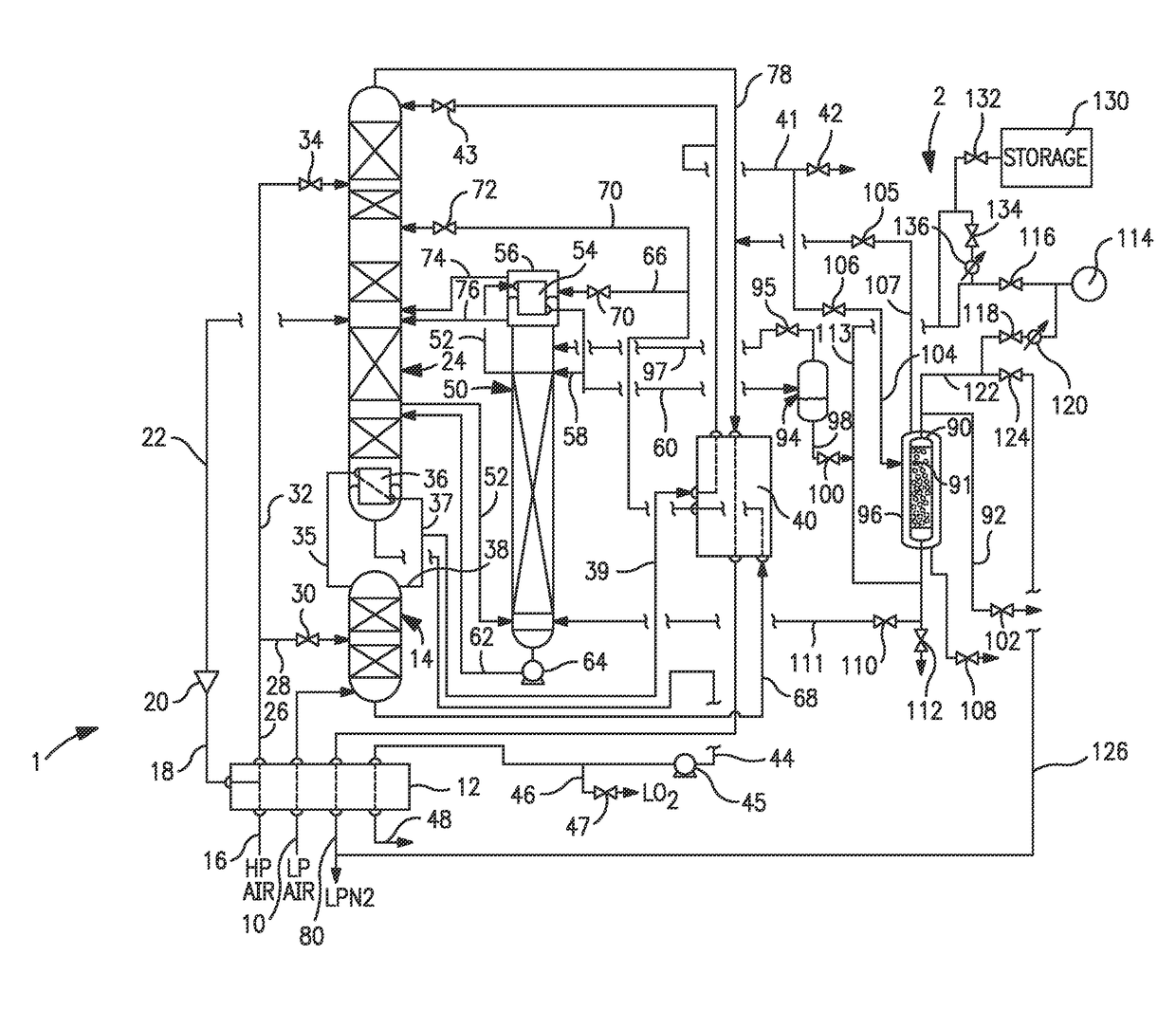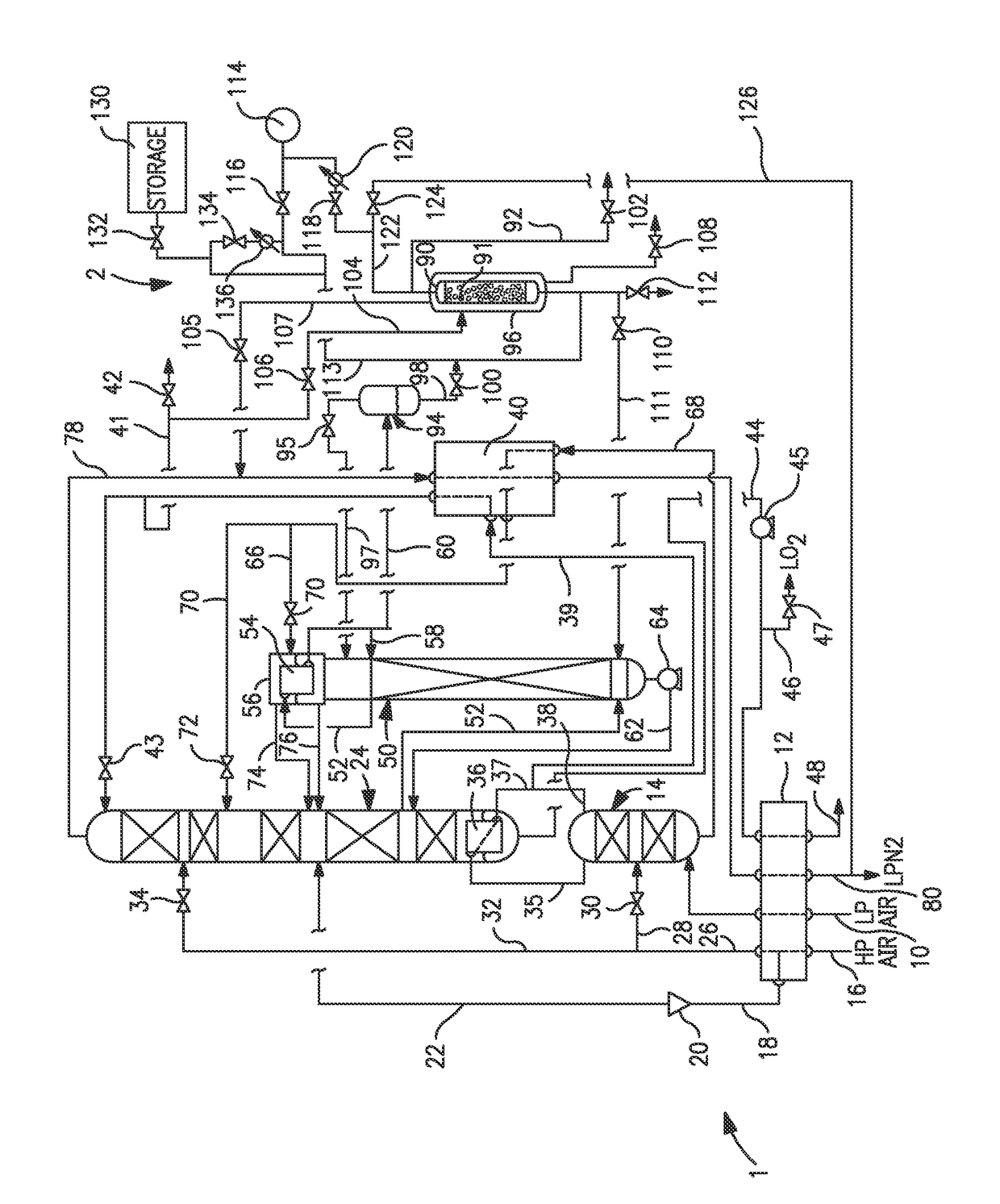Argon production method and apparatus
a technology of argon and production method, applied in the direction of liquefaction, lighting and heating apparatus, separation processes, etc., can solve the problems of increasing the height of the argon cylinder, increasing the argon cylinder volume, so as to reduce the overall coldbox space, reduce the associated size of equipment/vessels, and reduce the cos
- Summary
- Abstract
- Description
- Claims
- Application Information
AI Technical Summary
Benefits of technology
Problems solved by technology
Method used
Image
Examples
Embodiment Construction
[0017]In reference to FIG. 1, an air separation plant 1 is illustrated that is integrated with an argon purification system 2. The subject equipment is typically enclosed in an insulated enclosure (or coldbox—not shown). Incoming air by way of a compressed and pre-purified feed air stream 10 is separated into oxygen and nitrogen-rich fractions in high and low pressure distillation columns 14 and 24. Argon is separated in an argon column 50 to produce liquid argon having oxygen impurities. An impure liquid argon stream 60 composed of part of the liquid argon produced in the argon column 50 is purified in the argon purification system 2 to produce a purified liquid argon product 92.
[0018]It should be noted that high and low pressure distillation columns 14 and 24 and argon column 50 represent distillation columns in which vapor and liquid are counter-currently contacted in order to affect a gas / liquid mass-transfer based separation of the respective feed streams. Columns 14, 24 and 50...
PUM
| Property | Measurement | Unit |
|---|---|---|
| temperature | aaaaa | aaaaa |
| temperature | aaaaa | aaaaa |
| temperature | aaaaa | aaaaa |
Abstract
Description
Claims
Application Information
 Login to View More
Login to View More - R&D
- Intellectual Property
- Life Sciences
- Materials
- Tech Scout
- Unparalleled Data Quality
- Higher Quality Content
- 60% Fewer Hallucinations
Browse by: Latest US Patents, China's latest patents, Technical Efficacy Thesaurus, Application Domain, Technology Topic, Popular Technical Reports.
© 2025 PatSnap. All rights reserved.Legal|Privacy policy|Modern Slavery Act Transparency Statement|Sitemap|About US| Contact US: help@patsnap.com


